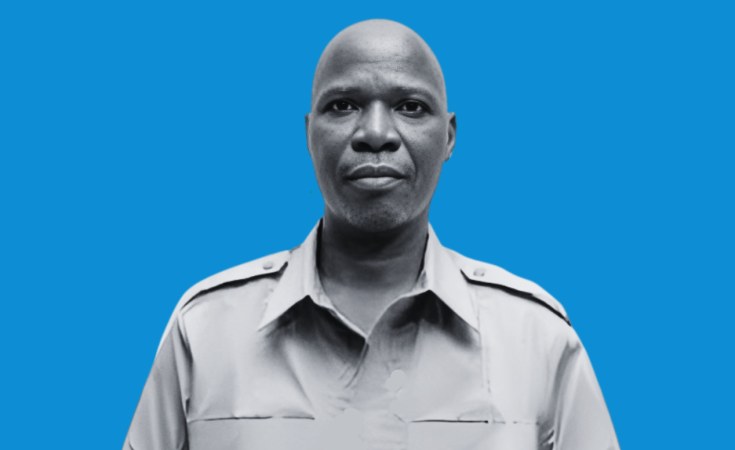CIVICUS discusses anti-corruption protests in Uganda with Mohammed Ndifuna, Executive Director of Justice Access Point (JAP), a civil society organisation (CSO) that promotes human rights and the rule of law.
Inspired by recent mass demonstrations in Kenya , young Ugandans are taking to the streets to protest against corruption. President Yoweri Museveni, in power since 1986, warned that they were ‘playing with fire’ and said their actions wouldn’t be tolerated, accusing some of working with foreigners to cause chaos. Citing their constitutional right to protest, organisers went ahead with a demonstration despite being denied a permit to march. More than a hundred protesters were arrested and there were allegations of assaults on detained protesters.
What sparked protests in Uganda?
On 23 July, Ugandans took to the streets to protest against corruption, abuse of power and poor governance. Public frustration had been building for some time, but reached a boiling point when an online campaign exposing widespread corruption in parliament began trending on Twitter/X. Using the hashtag #UgandaParliamentExhibition, the campaign leaked documents that revealed the misuse of public funds, fraudulent travel by members of parliament and nepotism in recruitment processes. This sparked calls for greater government accountability and transparency.
The protests weren’t the work of a single group, but rather a collective response from various parts of society. At the forefront were civil society and political activists who’ve been questioning the legitimacy of the government since the 2021 presidential election . Following this, the opposition National Unity Platform played a particularly active role in leading nationwide protests that often clashed with security forces.
But it wasn’t just political activists: business owners also joined the protests, frustrated by the heavy tax burden the Uganda Revenue Authority imposes on them. The imposition of a new tax collection system only added fuel to the fire.
To what extent were these protests inspired by recent protests in Kenya?
While the anger was mainly driven by local issues such as corruption and poor governance, these protests also echoed what was happening in the region, particularly in Kenya. The Gen Z-led campaign in Kenya may have inspired a sense of solidarity among Ugandan protesters, even if their frustrations were deeply rooted in their own national experiences. The brief detention of Ugandan opposition figure Kiiza Besigye in Kenya is evidence of how interconnected the regional movements have become.
How did the government respond to the protests?
The government’s response to the protests followed a predictable pattern of heavy-handed crackdowns, mass arrests and immediate legal action against protesters. Security forces cracked down on protesters to prevent them presenting their petitions to parliament.
This is the government’s usual response, prioritising repression over engagement and failing to address the underlying grievances driving the protests. Numerous reports have criticised this approach, and Uganda received several recommendations in this regard during its latest Universal Periodic Review at the United Nations Human Rights Council.
However, the government continues to take a heavy-handed approach to protests. Unless they are organised by regime supporters – which means they are not really protests – street demonstrations are seen as a threat and met with repression.
In contrast, online campaigns have been relatively more successful in eliciting a positive response. Despite the government’s attempts to suppress them, there are many such campaigns. A recent example was the ‘ pothole campaign ‘, in which people extensively shared pictures of the capital city’s potholes. This prompted a positive response from the government: the issue was raised in parliament and the president authorised the release of funds for road repairs.
What’s the situation of civil society in Uganda, and how can international allies help?
CSOs in Uganda operate in a restrictive regulatory environment. It is challenging to try to renew our permits or complete any other bureaucratic process. For example, organisations working across the country need to secure a memorandum of understanding with each district government, a process that is often delayed by local authorities. Financial constraints compound these difficulties. CSOs find it difficult to cover basic operating costs.
The international community has drawn attention to the challenges facing Ugandan CSOs, but this is not enough. We need sustained support to engage consistently on governance issues. With the closure of the Democratic Governance Facility, a major donor to local CSOs, many organisations have been forced to close.
To turn the tide, international partners can step in with critical financial support, innovative advocacy tactics and responsive policies to ensure that civil society can continue its vital work despite the constraints. With such support, our campaigns for legal reform, youth empowerment and accountability could gain more traction.
Regional cooperation among civil society activists through the East African Community is also key. By joining forces, we can increase our efforts to strengthen our campaigns and amplify our voices.
Civic space in Uganda is rated ‘repressed’ by the CIVICUS Monitor .
Get in touch with JAP through its website or Facebook page, and follow @justicessp on Twitter.


